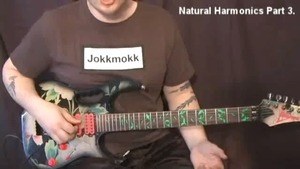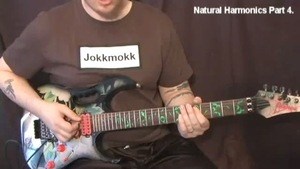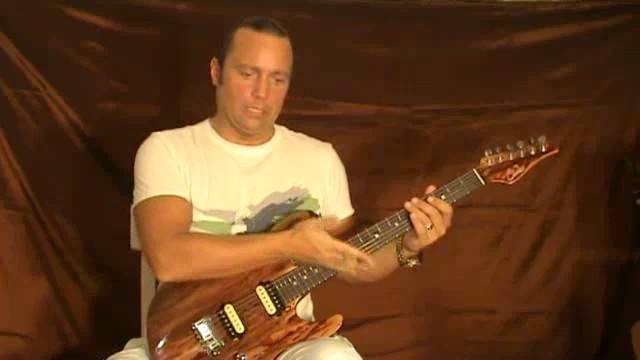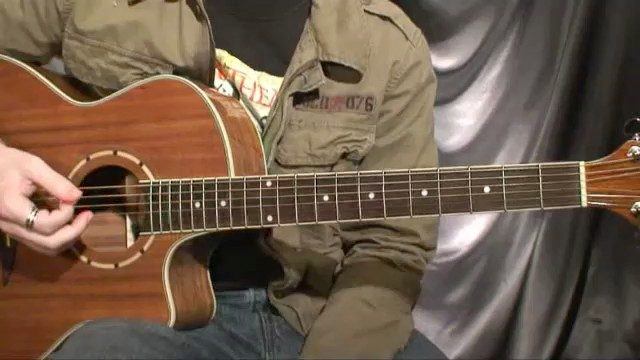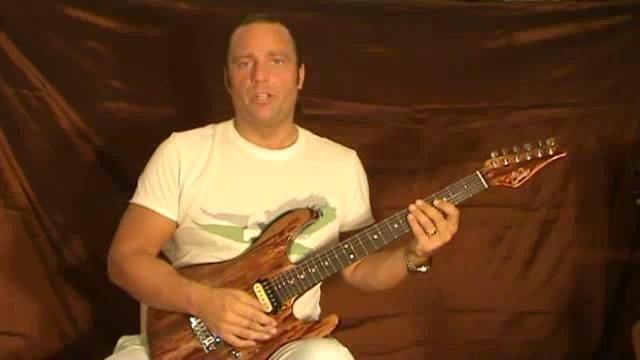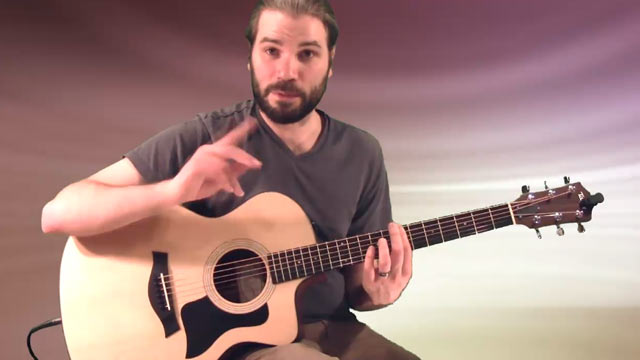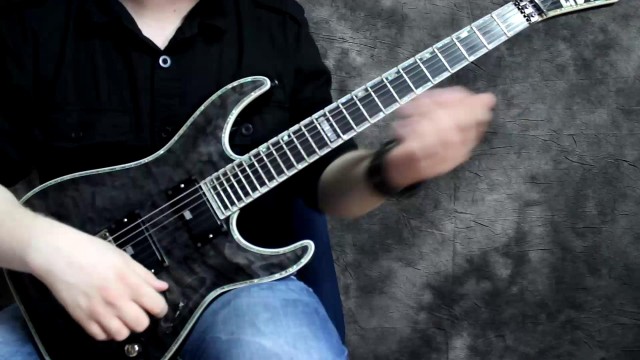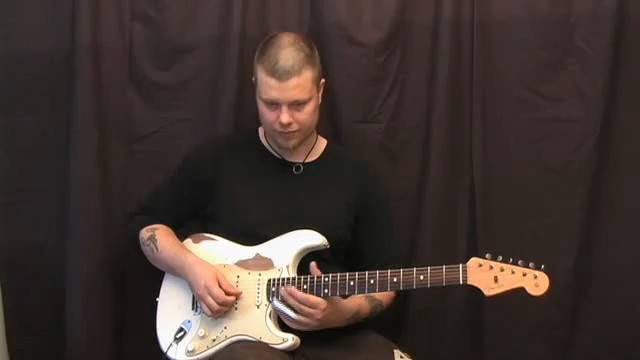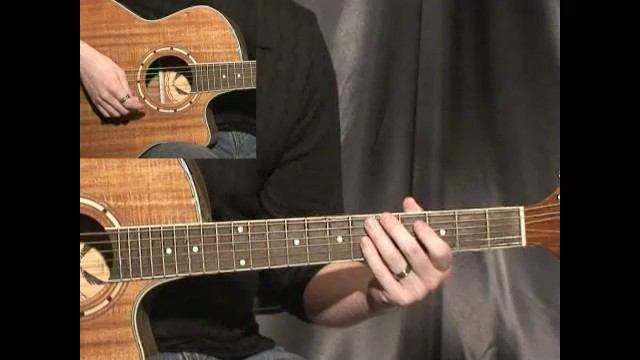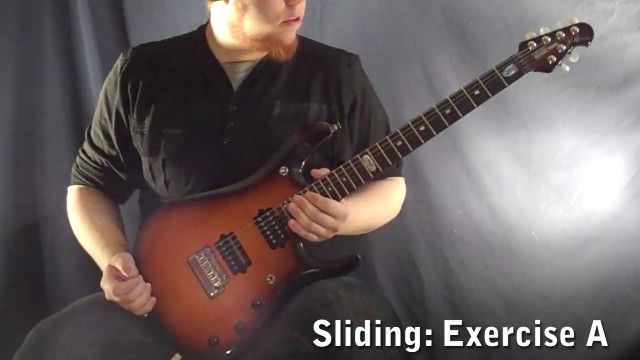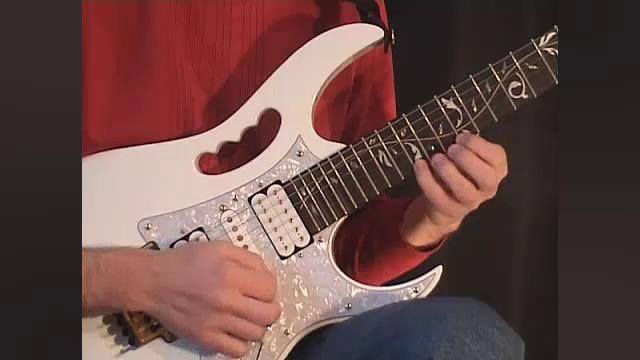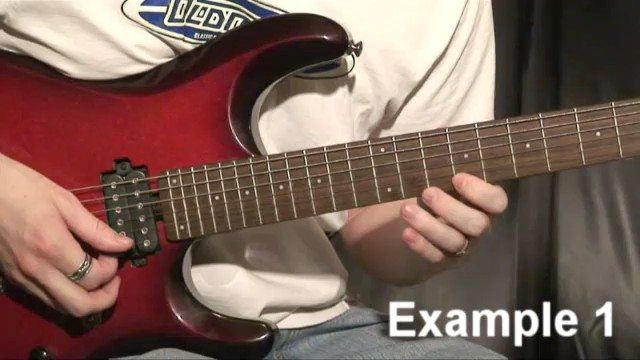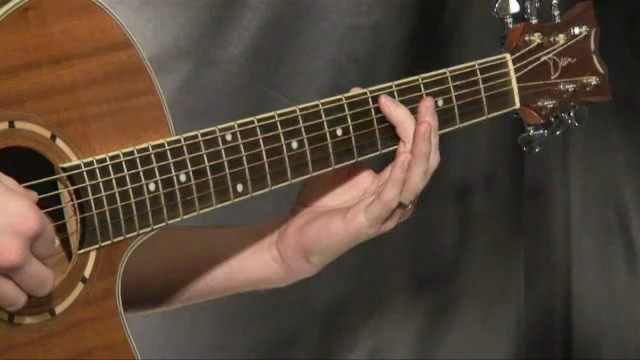"Capo Harmonics" is maybe not the most imaginative name, but it was the best I could come up with. I have no idea if this particular technique has a specific name. To start out with, you’ve all tried and heard the Vai/Satriani licks, where you just make a drill on the neck and run your right hand finger lightly back and forth along the string to trigger the harmonics in rapid succession, creating a flurry of seamless harmonics. Very cool, very 80’s guitar hero!
Next is a variation of this that forces you to take into consideration all the placement and divisions of the harmonics. In these examples, the letters underneath the TAB-line is the correct pitch of the harmonic. However, the software can only note the actual sheet music as being the same as the fretted note (as you see). The first example shows you a legato pattern similar to the one I used in my last tutorial “TapOut”. The technique then involves finding a nodal point that produces a harmonic for all notes in the lick. In this case, I’ve chosen the 12th fret. Then I just lightly hold my finger at the 12th fret throughout the lick. When I then hammer-on to the C, it will produce a G (the 1/3 division of the C-string). When I hammer-on to the D, it will produce a D (the ¼ division of the D-string). And when I pull-off to the open G-string it will of course produce a G (the ½ division of the G-string).
Also, make sure the notes produced fit the key you’re playing in. Try tuning a string up or down to access notes not available with the standard tuning of the guitar.
Then, I move on to doing a simple 2 string pattern from the C Ionian scale. You have to be able to play this legato lick up to speed without using any pick, just hammering-on from nowhere, since your right hand will be busy holding a finger over the 12th fret at both the A and D-string. You can of course look for other nodal points that will produce harmonics for all notes chosen. I chose the 12th since that will be familiar ground for you (for now). It is up to you to boldly go where no guitarist has gone before (and also to live long and prosper I might add!).
So, finally we are at the end of this long tutorial! I hope you picked up some helpful tools and insights to further your use of harmonics. See you in my next tutorial!




